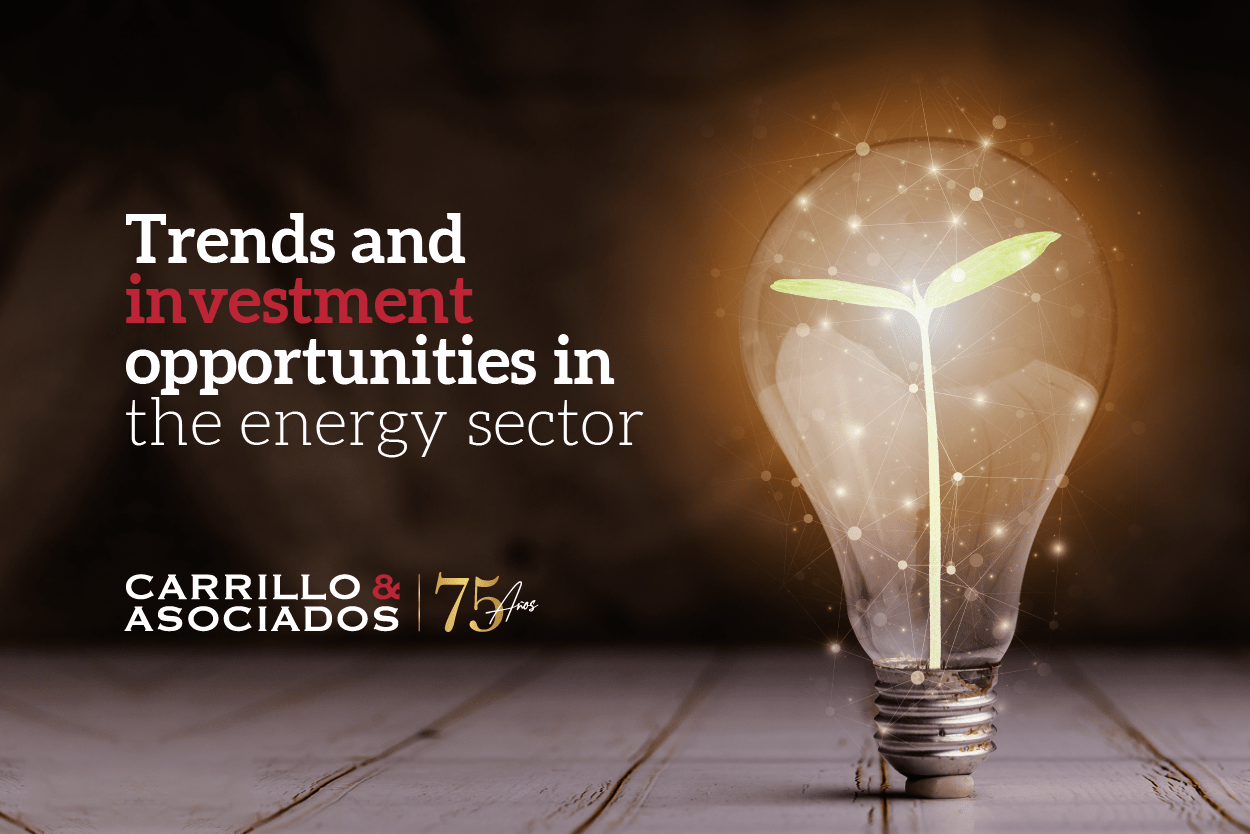
Newsletter #148 / March 2023
In February we attended the conference: "Renpower Central America and the Caribbean", where we learned about new trends in the region's energy and renewable energy markets, the challenges facing the countries, several investment opportunities, and news updates. The conference was organized by Euroconvention Global and was held in Panama City.
Below you will find information on the most relevant points. Don´t hesitate to contact us if you would like to learn more about any topic or require advice from our team.
1. EEGSA[1]PEG-4 and PEG-5 bids
EEGSA’s executives, Josué Figueroa and Daniel Carías, spoke about the company's active bids and those to come in the future.
The PEG-4 tender, which opened in August 2022, seeks to contract 235 MW with a participation of at least 50% in renewable energy,including new plants with contracts of various terms and stipulations applicable to each technology to be offered. Technical bids are due to be received by May 31st of this year.
As for the PEG-5 tender, EEGSA is still fine-tuning it and has not set a release date. However, executives told us that they are designing it to attract new investments.This tender will open opportunities to deepen the development of other renewable energy sources, such as wind, photovoltaic, geothermal, gas and even green hydrogen.
2. Panama: the future, green hydrogen
Panamanian officials presented the basis of the plan for their green hydrogen[2][2] (H2) strategy. Panama has clear goals for universal access to energy, electric mobility, efficient use of resources and distributed generation, and innovation of the National Interconnected System (SIN) by 2030. Their studies indicate that they could produce 4 million tons of H2 per year by 2040.
For this plan to be successful, new power generation plants are required, and these must be renewable. The country intends to take advantage of all the infrastructure and logistics it currently has for the storage and distribution of fossil fuels, to turn the country into a green hydrogen hub, with the capacity to export it to the world.[3].
3. Dominican Republic: progress in electrification with renewable energies
Vice Minister Rafael Gómez, from the Ministry of Energy and Mines of the Dominican Republic, talked about the energy market in his country. Today, the island depends on petroleum products and fossil technologies to produce energy, which has increased the cost of energy by up to 50%, given the behavior of these raw materials.
Due to its geographical location, the island lacks the possibility of interconnecting with the grid of neighboring countries and doesn’t have a sufficiently powerful water resource for the construction of large capacity hydroelectric plants.
However, the Dominican Republic has a legal framework that encourages the development of renewable energy sources, which includes tax exemptions, reduced interest payments on financing, investment incentives and the possibility for the investor to negotiate with carbon credits or certificates..
According to the data presented, the renewable energy potential in the country is high: more than 63,000 MW in offshore wind potential, 9,000 in solar photovoltaic and 3,260 in onshore wind potential.
4. Main challenges for the energy sector:
The Renpower conferences lasted two days. Based on all the talks we attended, here are the main challenges we see for the sector in Central America:
- The energy needs of each country are increasing and we must develop strategies to respond to them in a sustainable way.
- Environmental commitments make an energy transition towards renewable energy sources and the decarbonization of the energy mix urgent and unavoidable.
- Interconnections between countries are becoming increasingly scarce. On many occasions, when they want to continue interconnecting renewable energies, it is not possible to take advantage of them because the consumption peaks are higher at different times. There are always limitations due to the transmission capacities of the countries' grids.
- The regulatory agenda should anticipate and plan the way in which companies can contribute.
- Investors in the energy sector face problems of all kinds, from excessive bureaucracy, social conflict and lack of legal certainty to name a few. This impacts on scarce mechanisms for the protection of their investment. The technical and regulatory part is important, but also the protection of foreign investment.
For further information please contact:
- Ricardo Recinos ricardo.recinos@carrillolaw.com
- Gabriel Cabrera gabriel.cabrera@carrillolaw.com
[1] Empresa Eléctrica Guatemalteca, S.A. (energy trading company)
[2] Refers to hydrogen that has been obtained without generating polluting emissions. Available in: https://www.acciona.com/es/hidrogeno-verde/?_adin=02021864894#2
[3] More on Panama's proposed energy transition strategy, Available at: https://www.americaeconomia.com/negocios-industrias/panama-propone-estrategia-para-consolidar-centro-logistico-de-hidrogeno-verde